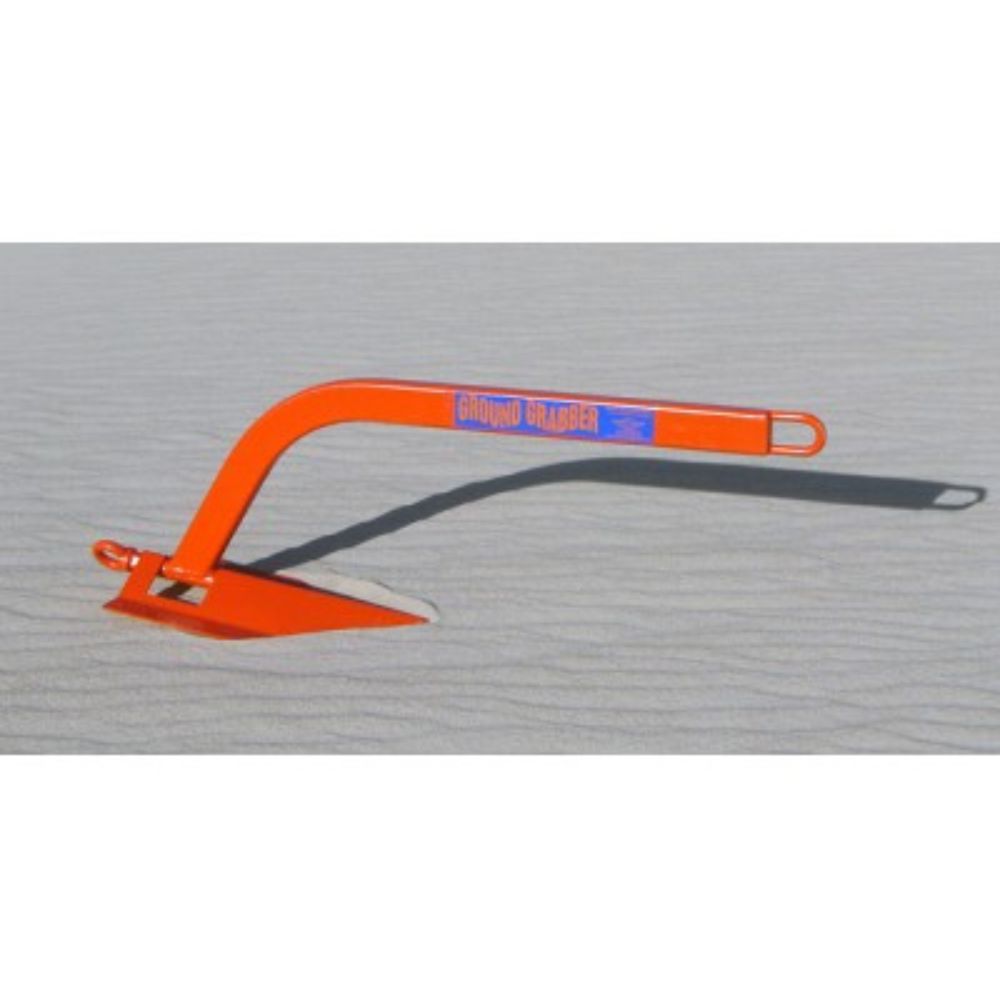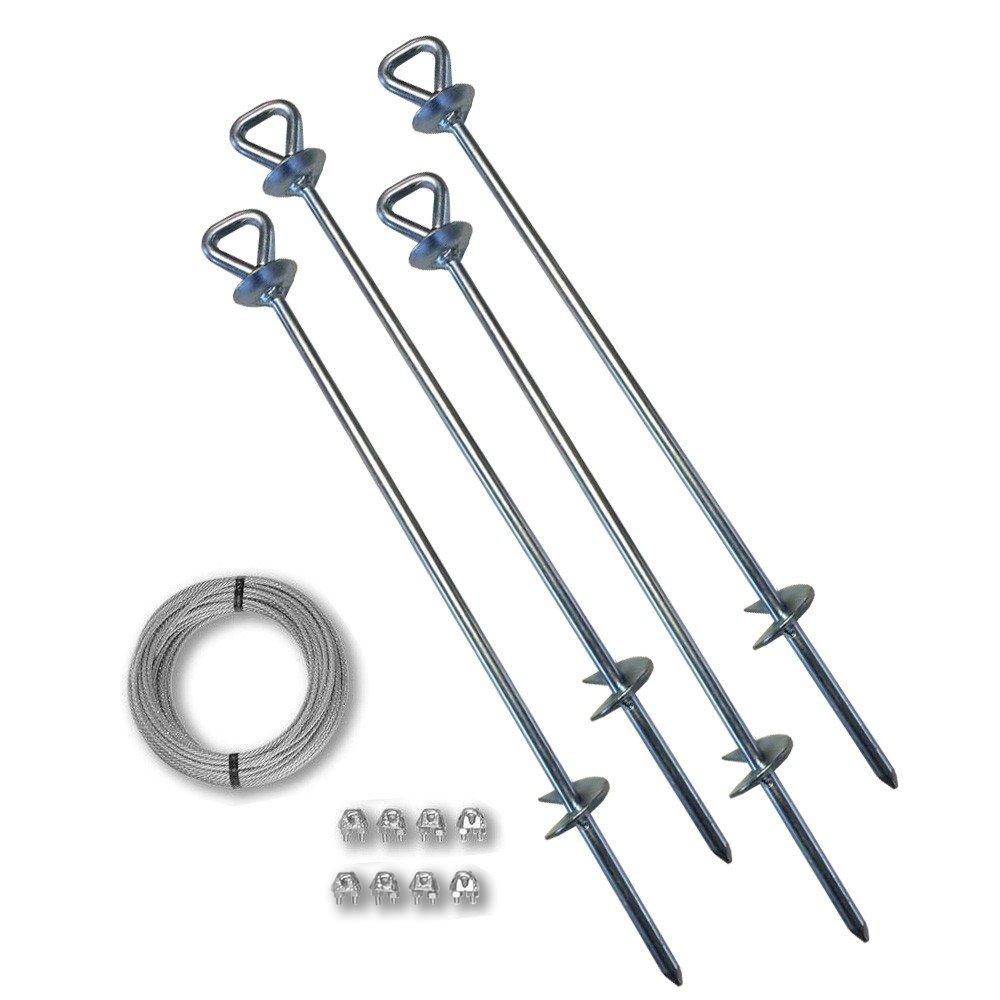How They Handle Loads: heavy-duty earth anchors Explained
Wiki Article
How Durable Earth Anchors Work: A Comprehensive Overview to Dirt Anchoring Solutions
Durable Earth supports play an essential role in offering security and support in numerous building applications. By installing deeply right into the ground, they withstand upright and lateral pressures efficiently. Various sorts of anchors deal with different soil problems, making them versatile. Recognizing their auto mechanics and setup methods is vital for maximizing performance. What variables affect their effectiveness, and exactly how do they compare to typical methods? The responses may amaze you.Comprehending Durable Earth Anchors
Durable Earth supports offer as necessary elements in various building and landscaping projects, offering security and support in difficult soil problems. These supports function by being embedded right into the ground, where they stand up to vertical and side forces. Their design enables safe and secure add-on to structures, ensuring they continue to be secured versus dirt activity or external loads.The effectiveness of durable Earth anchors mostly depends on the sort of dirt and the anchor's installment deepness. Appropriate installation methods are essential, as they figure out the support's holding capacity. Environmental factors, such as wetness and freeze-thaw cycles, can also influence performance.These anchors are regularly used in applications ranging from securing fences and preserving wall surfaces to supporting momentary frameworks during damaging weather conditions. Comprehending the concepts behind sturdy Earth supports is crucial for professionals seeking to enhance the longevity and safety and security of their projects.Sorts Of Heavy-Duty Earth Anchors
Different types of heavy-duty Earth supports are developed to fulfill particular needs based upon soil problems and project demands. Helical anchors, featuring screw-like blades, are efficient in softer dirts, using high load capabilities and simple installation. Driven supports, which are inculcated the ground, are appropriate for rough terrains and give prompt load support. Tie-back anchors are typically used in preserving wall surface applications, enabling for lateral assistance by securing into the ground at an angle. Another type is the cast-in-place anchor, ideal for concrete applications, as they are incorporated into foundations for improved security. Lastly, dirt screw anchors are functional options that can be used in various dirt kinds, offering reputable stress and compression capacities. Each kind serves unique applications, guaranteeing security and safety in building and construction and landscaping tasks. Comprehending these options enables educated choices in choosing the appropriate Earth anchoring option.The Mechanics of Dirt Anchoring

Understanding the auto mechanics of soil anchoring requires an evaluation of numerous kinds of Earth anchors and their installation methods. Each support type offers distinct qualities that affect its performance in various dirt conditions. Proper setup approaches are important for making the most of the anchoring system's stability and performance.
Types of Earth Anchors
Earth anchors, important elements in soil anchoring systems, come in a number of kinds, each created for particular applications and dirt problems. One of the most usual kinds include screw anchors, which are twisted into the ground, providing solid side resistance. Helical anchors feature blades that enable reliable installment in various dirt kinds, making them appropriate for both irreversible and momentary applications. Driven supports, usually made from steel, are hammered into the soil and work in thick or rocky settings. Auger supports use a helical design to promote installment in softer dirts. Ultimately, plate supports include a flat plate hidden horizontally, dispersing tons over a larger location, suitable for applications requiring high load capabilities in natural soils.Installment Methods Described
Proper installation techniques are vital for the performance of soil anchoring systems. The process typically starts with site assessment, validating the chosen area can sustain the anchor's lots. After determining the proper support type, proper opening depth and angle have to be established. The setup entails driving the anchor into the ground utilizing customized devices, such as hands-on or hydraulic chauffeurs, to accomplish ideal embedment. Post-installation, tensioning the support is critical to ensure stability; this is commonly validated with load testing. In addition, bordering soil conditions should be checked to stop displacement. Complying with these methods not just enhances the support's performance however additionally lengthens its lifespan, giving reputable support for numerous applications.Applications of Heavy-Duty Earth Anchors
While sturdy Earth supports are frequently related to construction and landscape design, their versatility expands to a selection of applications throughout different sectors. In civil design, they give essential assistance for preserving wall surfaces, ensuring stability in areas vulnerable to soil disintegration. The aquatic market utilizes these anchors for securing anchors and marinas, avoiding motion brought on by trends and currents. In addition, in the telecommunications sector, durable Earth anchors are substantial for maintaining cell towers and various other high structures against wind forces. Agricultural applications additionally benefit, as these supports can safeguard frameworks like greenhouses and livestock fence, guaranteeing they hold up against rough weather. Furthermore, in renewable resource projects, such as wind ranches, Earth supports play a crucial duty in safeguarding wind turbine foundations, improving total safety and security and efficiency. This wide series of applications highlights the flexibility and integrity of durable Earth anchors across numerous areas.Advantages Over Typical Anchoring Approaches
Although traditional anchoring techniques have long been depended upon for security, heavy-duty Earth anchors provide considerable advantages that boost performance and effectiveness. One significant advantage is their exceptional load-bearing capability, which permits them to hold up against higher forces without failure. This stamina makes them optimal for requiring applications, such as in building and energy installations.Additionally, durable Earth supports are made Extra resources for much deeper installation, offering higher stability in numerous dirt conditions, consisting of sandy or loosened soils. Their resistance to deterioration and environmental variables assures a much longer life expectancy and lowered maintenance costs contrasted to traditional methods.Moreover, these anchors can be set up with minimal disturbance to the surrounding location, maintaining the honesty of the landscape. Overall, sturdy Earth anchors provide a reputable and reliable service for anchoring demands, exceeding the restrictions frequently connected with traditional anchoring strategies.Setup Refine and Best Practices
The setup procedure for soil anchoring solutions starts with thorough preparation and website assessment to guarantee peak efficiency. Following this, a detailed installation guide gives clear instructions for effective application (tensile load anchors). Following these ideal practices is crucial for achieving long-lasting and trusted anchoring resultsPreparation and Site Evaluation
Efficient prep work and thorough site evaluation are important action in the setup of dirt securing solutions. Prior to setup, the dirt type must be examined to identify its bearing ability and suitability for securing. Carrying out a geotechnical survey can supply crucial details about dirt make-up, dampness levels, and prospective ground movement. In addition, identifying existing structures, plants, and energies is necessary to avoid disturbance throughout setup. The location needs to be free from debris and obstacles to guarantee risk-free access for tools. Climate problems need to also be kept track of, as unfavorable conditions can influence both security and installment efficacy. By carefully preparing the site and examining all pertinent aspects, the chance of effective support performance is substantially enhanced.Step-by-Step Setup Overview
A thorough installation procedure is crucial for attaining perfect efficiency of dirt anchoring remedies. The setup starts with choosing the suitable anchor kind and ensuring the site is free from debris. Next off, correct hole placement is identified based upon load needs. When the place is established, openings are pierced to the specified deepness and size making use of the appropriate devices. The support is after that put into the hole, ensuring it is aligned correctly. After safeguarding the support, soil is backfilled and compressed to boost security. It is important to comply with manufacturer standards throughout the process. A post-installation inspection validates that the anchors are effectively located and operating as planned, supplying trustworthy assistance for the intended application.
Upkeep and Inspection of Earth Anchors
Normal upkeep and examination of Earth anchors are crucial for making certain lasting efficiency and security. Regular checks allow for the very early discovery of concerns such as rust, loosening up, or soil movement. Inspectors should search for signs of rust or deterioration on the support elements, particularly at the link factors. In addition, the bordering soil must be analyzed for erosion or modifications in moisture web content, which can influence anchor effectiveness.It is suggested to develop a routine examination routine, ideally at the very least annually, depending on ecological problems. Throughout evaluations, all visible parts need to be cleaned up to remove dirt or particles that could conceal potential troubles. Any indicators of distress, such as tilting structures or uncommon settling, must motivate immediate analysis. Correct paperwork of inspections can assist in tracking anchor efficiency gradually and facilitate timely upkeep activities, making certain the anchors stay practical and reputable.Regularly Asked Questions
What Materials Are Heavy-Duty Earth Anchors Generally Made From?
Heavy-duty Earth supports are normally built from sturdy products such as galvanized steel or stainless-steel, making sure strength and resistance to deterioration. These materials provide lasting support and stability in various soil conditions and applications.Just How Do Dirt Problems Affect Anchor Efficiency?
Dirt problems considerably affect support performance. Aspects such as soil kind, moisture web content, and compaction affect the support's grasp and stability, with cohesive soils typically providing far better resistance than sandy or loose soils, influencing general effectiveness.
Can Heavy-Duty Earth Anchors Be Recycled After Elimination?
Heavy-duty Earth supports can be reused after removal, provided they are checked for damage and wear. Proper cleaning and upkeep improve their long life, guaranteeing efficient performance in succeeding installations when conditions permit safe reinstallation.What Are the Environmental Impacts of Using Earth Anchors?
The environmental influences of using Earth anchors include possible dirt disturbance, interruption of local environments, and possible contamination of groundwater. Nevertheless, if utilized responsibly, their advantages typically exceed these issues, promoting security in numerous applications.How Do I Pick the Right Anchor for My Project?

Report this wiki page